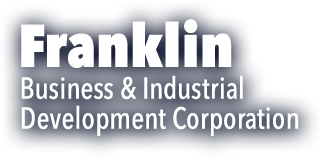Investment Incentives
Frequently Asked Questions
Tax Increment Financing [TIF] Plans (RSA Chapter 162-K)
What is a TIF? In simple terms, a TIF Plan sets forth general goals for improvements to be carried out in a TIF District, which is a defined area made up of individual commercial or industrial properties. These improvements usually involve infrastructure [roads, utilities, and public amenities such as parking and parks] which are all key components for attracting and creating a healthy business community. The City of Franklin has two TIF Plans & Districts; one is the core downtown business zone, and the other is centered on the industrial land off of South Main Street. The TIF Plans helps to create a cooperative public / private partnership to achieve the Plan goals.
How are the improvements funded? A key component of a TIF plan is the capturing and dedication of the new tax revenues resulting from the new development to help pay for the costs of the improvements. A variety of other funding sources (for example, bonds, loans, grants, or gifts) can also be used to pay for the improvements performed by the City.
How is new tax revenue captured? When the TIF district is created by the Council the base line values for the individual properties in the district are established. Improvements to properties or new developments in the district create added value and result in new tax revenues above and beyond the base line revenues. The new revenues are set aside in a dedicated TIF account to pay for the improvements undertaken by the City; if bonds are a funding mechanism for a public improvement, the TIF funds most likely go towards the yearly bond payment obligations.
Does the creation of a downtown TIF fit in with the planning and development goals and objectives of the City of Franklin? All of the recent planning documents (the Vision 2000 plan, 2005 Master Plan, the 2006 Downtown Charrette plan, the 2015 Franklin for a Lifetime, and the 2016 Master Plan update) identify the downtown and mill district area as being critical to the overall economic well being of the City. The creation of a downtown TIF is clearly identified as being an important mechanism for encouraging the needed revitalization efforts.
How are the financial interests of the City protected? First, the timing of the City infrastructure improvements and the new revenues from the private investments need to go hand in hand to insure that city costs and revenues match up as much as possible. Second, the TIF plan could include requirements for Developer Agreements where the developers would be responsible for any shortfall between the money the City has in the TIF fund and the outstanding yearly obligations for bond payments. Third, where feasible and appropriate, the exposure of the City for yearly financial obligations is minimized through the smart use of outside grants and other funds to pay for the infrastructure improvements without the issuance of bonds.
How is the TIF district administered? The TIF statute requires the appointment of a district administrator who oversees operations and issues of the TIF district and plan. Also, an Advisory Board is appointed by the City Council, with this Board providing the Administrator and the Council with input and ideas on the planning and implementation of the plan. The Council retains control over the expenditure of TIF funds, contracts, the purchasing of the land necessary to further the goals of the plan, or the acceptance of any grants.
What is the lifespan of the TIF? Once all of the financial obligations for a set of projects are cleared, the Council can abandon the TIF and the added revenues then flow back into the general funds of the City. But, the TIF plan can be modified in the future by the Council to add new goals and specific projects, and these modifications can create a multi-year TIF program. There is also the option of keeping the TIF active and directing some smaller portions of the TIF funds to the ongoing maintenance and upkeep of the improvements (landscaping, parks, etc.). This would be determined by the Council with the recommendation of the Administrator, the Advisory Board, and city staff.
| Attachment | Size |
|---|---|
| 741.93 KB |

